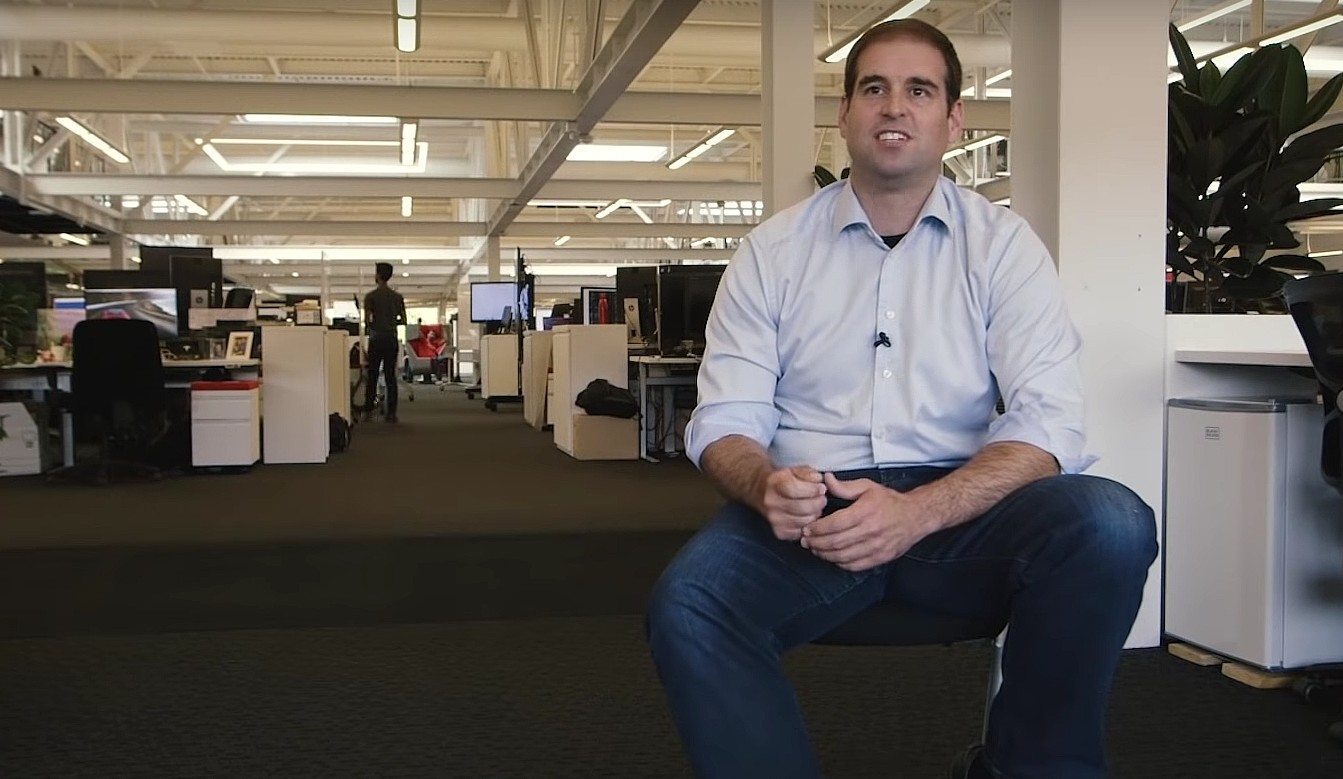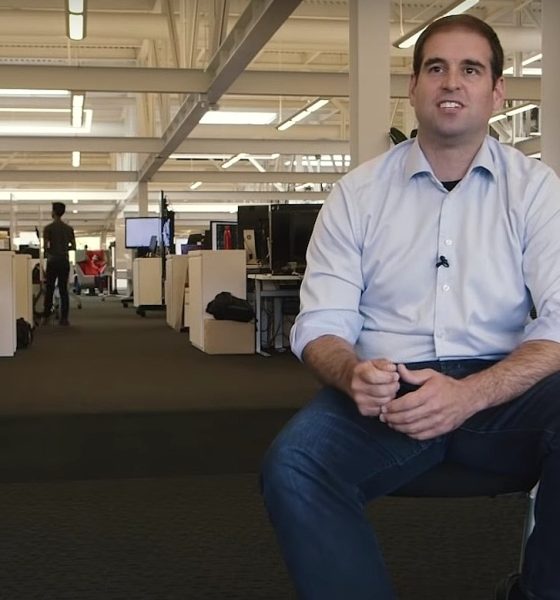

News
Former Tesla CTO’s battery recycling startup secures funding from Amazon
Redwood Materials, the battery recycling startup founded by former Tesla CTO JB Straubel, recently secured some funding from Amazon as part of the e-commerce giant’s efforts to reduce its emissions. Redwood is one of five companies that Amazon is investing in as part of its Climate Pledge Fund, which was announced last year and expected to cost about $2 billion.
In a statement about the five companies that received funding, Amazon CEO Jeff Bezos stated that firms like Redwood are “channeling their entrepreneurial energy into helping Amazon and other companies reach net zero by 2040 and keep the planet safer for future generations.” Amazon, for its part, appears to be interested in Redwood’s recycling technology, which could allow materials like lithium, cobalt, and nickel to be extracted from old smartphones and other consumer devices.
Redwood was founded by the former Tesla CTO in 2017 after seeing that the global shift to electric vehicles will likely cause unnecessary environmental damage from a surge in mining. Such a scenario would only happen, however, if there is no recycling system in place that would allow EV producers to reuse the materials that have already been used in their cars’ batteries. Speaking with the Financial Times, Straubel shared his vision for the transportation sector, which involves the mass adoption of EVs and a closed-loop battery recycling system.
“(My vision is a) world where all of the transportation is done by electric vehicles and we have batteries powering a sustainable world. And all of those batteries are able to be recycled and remanufactured many, many times so that we can have a nearly closed-loop,” Straubel said.
This same concept stands just as true in the consumer electronics sector, according to the former Tesla CTO. Straubel remarked that while batteries are bound to degrade with repeated use, the underlying elements that comprise them remain sealed from the environment. This meant that the batteries’ materials, most of which are very valuable, could be broken down and repurposed once more. If this is accomplished, the former Tesla executive believes that mining would not be as necessary anymore.
“There are a phenomenal amount of cell phones in the world that currently are being discarded as trash or thrown into a landfill. It’s a massive, untapped resource. If we can recover 98 or 99% of those materials and reuse them, we don’t need very much new material to keep that whole process running… Even though the battery is internally degraded, all of the same materials are still in there — all of the same atoms of lithium, nickel, and cobalt. You can still harness all of those same materials, but they need to be reprocessed and brought back to a state where they could be used again and built into a new battery,” Straubel remarked.
The exact amount of funding that Redwood Materials has acquired from Amazon has not been disclosed by either company, through the former Tesla executive noted that there was a potential for “partnership on a number of different levels” between the recycling startup and the e-commerce giant. One of these levels may include aiding Amazon in building and developing an end-of-life process for consumer electronics that are sold through its e-commerce platform so that the devices and their components could be reused.
Redwood Materials has remained mostly in stealth mode since its founding, though signs have emerged that the company may be part of Tesla’s efforts to develop its own battery recycling processes. One of these involves an existing partnership with Panasonic to reclaim the scrap that is generated from the battery cells currently produced at Tesla’s Gigafactory Nevada facility. Reports have indicated that Panasonic initially started a trial run with Redwood to reclaim more than 400 pounds of scrap from Giga Nevada, and the results were so successful that the Japanese firm raised its contract to 2 tons not long after.

Elon Musk
Starlink passes 9 million active customers just weeks after hitting 8 million
The milestone highlights the accelerating growth of Starlink, which has now been adding over 20,000 new users per day.

SpaceX’s Starlink satellite internet service has continued its rapid global expansion, surpassing 9 million active customers just weeks after crossing the 8 million mark.
The milestone highlights the accelerating growth of Starlink, which has now been adding over 20,000 new users per day.
9 million customers
In a post on X, SpaceX stated that Starlink now serves over 9 million active users across 155 countries, territories, and markets. The company reached 8 million customers in early November, meaning it added roughly 1 million subscribers in under seven weeks, or about 21,275 new users on average per day.
“Starlink is connecting more than 9M active customers with high-speed internet across 155 countries, territories, and many other markets,” Starlink wrote in a post on its official X account. SpaceX President Gwynne Shotwell also celebrated the milestone on X. “A huge thank you to all of our customers and congrats to the Starlink team for such an incredible product,” she wrote.
That growth rate reflects both rising demand for broadband in underserved regions and Starlink’s expanding satellite constellation, which now includes more than 9,000 low-Earth-orbit satellites designed to deliver high-speed, low-latency internet worldwide.
Starlink’s momentum
Starlink’s momentum has been building up. SpaceX reported 4.6 million Starlink customers in December 2024, followed by 7 million by August 2025, and 8 million customers in November. Independent data also suggests Starlink usage is rising sharply, with Cloudflare reporting that global web traffic from Starlink users more than doubled in 2025, as noted in an Insider report.
Starlink’s momentum is increasingly tied to SpaceX’s broader financial outlook. Elon Musk has said the satellite network is “by far” the company’s largest revenue driver, and reports suggest SpaceX may be positioning itself for an initial public offering as soon as next year, with valuations estimated as high as $1.5 trillion. Musk has also suggested in the past that Starlink could have its own IPO in the future.
News
NVIDIA Director of Robotics: Tesla FSD v14 is the first AI to pass the “Physical Turing Test”
After testing FSD v14, Fan stated that his experience with FSD felt magical at first, but it soon started to feel like a routine.

NVIDIA Director of Robotics Jim Fan has praised Tesla’s Full Self-Driving (Supervised) v14 as the first AI to pass what he described as a “Physical Turing Test.”
After testing FSD v14, Fan stated that his experience with FSD felt magical at first, but it soon started to feel like a routine. And just like smartphones today, removing it now would “actively hurt.”
Jim Fan’s hands-on FSD v14 impressions
Fan, a leading researcher in embodied AI who is currently solving Physical AI at NVIDIA and spearheading the company’s Project GR00T initiative, noted that he actually was late to the Tesla game. He was, however, one of the first to try out FSD v14.
“I was very late to own a Tesla but among the earliest to try out FSD v14. It’s perhaps the first time I experience an AI that passes the Physical Turing Test: after a long day at work, you press a button, lay back, and couldn’t tell if a neural net or a human drove you home,” Fan wrote in a post on X.
Fan added: “Despite knowing exactly how robot learning works, I still find it magical watching the steering wheel turn by itself. First it feels surreal, next it becomes routine. Then, like the smartphone, taking it away actively hurts. This is how humanity gets rewired and glued to god-like technologies.”
The Physical Turing Test
The original Turing Test was conceived by Alan Turing in 1950, and it was aimed at determining if a machine could exhibit behavior that is equivalent to or indistinguishable from a human. By focusing on text-based conversations, the original Turing Test set a high bar for natural language processing and machine learning.
This test has been passed by today’s large language models. However, the capability to converse in a humanlike manner is a completely different challenge from performing real-world problem-solving or physical interactions. Thus, Fan introduced the Physical Turing Test, which challenges AI systems to demonstrate intelligence through physical actions.
Based on Fan’s comments, Tesla has demonstrated these intelligent physical actions with FSD v14. Elon Musk agreed with the NVIDIA executive, stating in a post on X that with FSD v14, “you can sense the sentience maturing.” Musk also praised Tesla AI, calling it the best “real-world AI” today.
News
Tesla AI team burns the Christmas midnight oil by releasing FSD v14.2.2.1
The update was released just a day after FSD v14.2.2 started rolling out to customers.

Tesla is burning the midnight oil this Christmas, with the Tesla AI team quietly rolling out Full Self-Driving (Supervised) v14.2.2.1 just a day after FSD v14.2.2 started rolling out to customers.
Tesla owner shares insights on FSD v14.2.2.1
Longtime Tesla owner and FSD tester @BLKMDL3 shared some insights following several drives with FSD v14.2.2.1 in rainy Los Angeles conditions with standing water and faded lane lines. He reported zero steering hesitation or stutter, confident lane changes, and maneuvers executed with precision that evoked the performance of Tesla’s driverless Robotaxis in Austin.
Parking performance impressed, with most spots nailed perfectly, including tight, sharp turns, in single attempts without shaky steering. One minor offset happened only due to another vehicle that was parked over the line, which FSD accommodated by a few extra inches. In rain that typically erases road markings, FSD visualized lanes and turn lines better than humans, positioning itself flawlessly when entering new streets as well.
“Took it up a dark, wet, and twisty canyon road up and down the hill tonight and it went very well as to be expected. Stayed centered in the lane, kept speed well and gives a confidence inspiring steering feel where it handles these curvy roads better than the majority of human drivers,” the Tesla owner wrote in a post on X.
Tesla’s FSD v14.2.2 update
Just a day before FSD v14.2.2.1’s release, Tesla rolled out FSD v14.2.2, which was focused on smoother real-world performance, better obstacle awareness, and precise end-of-trip routing. According to the update’s release notes, FSD v14.2.2 upgrades the vision encoder neural network with higher resolution features, enhancing detection of emergency vehicles, road obstacles, and human gestures.
New Arrival Options also allowed users to select preferred drop-off styles, such as Parking Lot, Street, Driveway, Parking Garage, or Curbside, with the navigation pin automatically adjusting to the ideal spot. Other refinements include pulling over for emergency vehicles, real-time vision-based detours for blocked roads, improved gate and debris handling, and Speed Profiles for customized driving styles.








